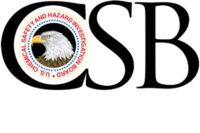
During the past few years, the global regulatory landscape has changed with the implementation of the United Nations’ Globally Harmonized System of Classification and Labeling of Chemicals (GHS). GHS has become an essential component of corporate account globalization plans, with its effect felt throughout the global supply chain.
Many countries have implemented GHS — but not always in its entirety. This results in differences in how the classification results are presented on both Material Safety Data Sheets (MSDSs) and on labels.
In the U.S., OSHA has released its proposal to modify the current Hazard Communication Standard (HCS) to conform to the UN GHS system. The proposed OSHA revisions have far-reaching implications for MSDSs and the authoring, publishing, distribution and management of labels.
The proposal also includes revised criteria for the classification of hazardous chemicals, changes to definitions and terms used in the standards and new training requirements for employees. When the final rule is announced, companies will face many challenges, including re-evaluating how their substances and mixtures are classified, reissuing MSDSs and labels and training staff.
Companies will also need to shift from a risk-based classification approach to a hazard-based classification approach. Instead of considering the likelihood or probability of an event occurring, classification will be absolute under GHS. The introduction of symbols is also a relatively new concept in the U.S.
Change on the horizon
OSHA expects that the final rule will be announced around March 2011. Companies will have three years from announcement to come into compliance with the final rule, and two years to implement training requirements on the final regulation. Once the rule is final, companies can begin implementation. However, in accordance with a letter of interpretation from OSHA on October 6, 2009, companies can begin following the EU GHS label format for their OSHA labels as long as the labels also comply with the current Hazard Communication Standard.
Effect on MSDSs and labels
Provided the legal process proceeds as planned, companies would be allowed to issue MSDSs and labels for the U.S. market according to the changed rule based on GHS classification no earlier than July 2011. All existing MSDSs and labels must be updated no later than July 2014. In comparison, the MSDSs for the European market must be in line with the EU GHS implementation no later than December 2010 for pure substances, and by June 2015 for mixtures.
The label requirements will involve changes in the printing process and probably will require many companies to invest in new label printers. Labels on products that are shipped outside the U.S. must have pictograms with a red frame, signal words and the required hazard and precautionary statements. It is still being determined whether or not empty frames will be accepted on the label or whether or not labels for products that are sold and used only in the U.S. may have the frame printed in black.
Simplifying conformance
Companies can take several steps now to prepare MSDSs and labels for OSHA’s announcement of the final rule, including checking their existing compliance tools and chemical regulatory information to ensure that they address the proposed new requirements.
For example, many companies choose to use reference tools which centralize all global chemical regulatory information into a searchable, easy-to-use database. This provides quick access to official GHS classifications, including substance classifications published by the relevant authorities. Other features supporting GHS compliance include translated GHS classifications, GHS labels, GHS full text and GHS phrases.
Other content tools may be used to feed chemical regulatory data into SAP EHS as well as other corporate EHS and MSDS authoring systems. These integrated data tools provide efficient change management and regular updates as regulations change and new ones are released. Other necessary tools are expert rules that ensure correct, consistent GHS classification and labeling according to the UN purple book and take into consideration the national deviations and other national regulations. Document templates for producing MSDSs, labels and other hazard communication documents and multi-lingual phrase libraries can complete the content suite for efficient production of accurate documents.
Companies may also choose to employ outsourced services for their GHS classification of substances and mixtures as a separate service and/or as a part of outsourcing MSDS and label authoring for companies that need GHS classification.
In-house MSDS authoring staff should use an authoring platform that will help generate hazard communication documents to meet GHS-related international regulatory compliance and business requirements. Such a platform should provide full support of hazard communication, classification and labeling requirements to generate globally-compliant MSDSs and label documents as well as business/user definable documents. The system should use algorithms to accommodate the requirements outlined in the GHS. This consists of the classification of substances and mixtures according to their health, environmental and physical hazards, and hazcom requirements for labeling and MSDSs.
For inbound vendor MSDS management, users will want to search, print, view and email vendor and raw material MSDSs in a companyspecific database via a web browser interface. As GHS requirements increase the burden of vendor MSDS management, a robust MSDS management system can help reduce the time and resources necessary for effective compliance management.
Facilitating compliance
Producing accurate and compliant MSDSs and labels can be a daunting task, especially with the regulatory landscape constantly shifting and changing. Strong processes, applications and systems are needed to support MSDS compliance management. Companies can also seek assistance from service providers who are well-versed in MSDS management as it relates to global EHS regulations and who thoroughly understand the global regulatory environment.


